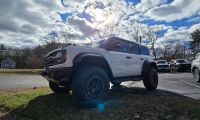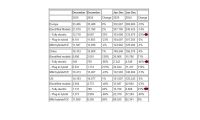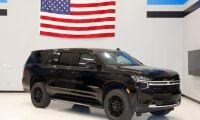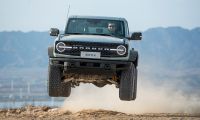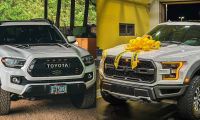Tesla Are Delivering the Giga Texas Model Y to Customers
Tesla is now delivering the Model Y from Giga Texas. What are its specifications? It is a Model Y 50D. That is an indication of the battery size and motor, implying a 50 kWh Tesla Model Y capable of 280 miles of range. This does align with the battery day math for the 4680 batteries.
However, the battery is more likely around 68 kWh. This is based on a theory that Tesla is using fewer battery cells, 690 cells, against 820 cells. This also tracks with Toy Teslikes estimated energy per cell, which is 81.1 for the long range and 67.6 for the standard range. Here is his post about it:
Here is what the specs of the 4680 Model Y battery packs look like based on what we have learned so far.
The LR pack has 828 cells arranged in a 69x12 layout. Each cell has 98 Wh. So, that's 98*828= 81,144 Wh which is 81.1 kWh which is the same as the 2170 LR pack. pic.twitter.com/IvPyUYjNJk— Troy Teslike (@TroyTeslike) April 9, 2022
Simply put, take the number of 4680 batteries cells in the standard range Model Y, 690 and multiply that by the watt hour per cell (Wh) of 98 (690 * 0.098) and you get 67.6 kWh. Pretty simple math. This is very close to the 67.8 kWh that was estimated and we likely now know the battery size of this Model Y vehicle. How does this compare with other Tesla vehicles?
The Model Y long range from Fremont, CA, has a battery size of 75 kWh and a range of 330 miles. That's 4.0 miles/kWh. The Model Y 50D from Giga Texas has a 68 kWh battery size and a range of 279 miles, putting its miles/kWh at 4.1. Pretty close with the Giga Texas Model Y, edging out a win in efficiency.
New Model Y With 4680 Cells
The energy density of the Model Y from Giga Austin is not as energy dense as the 2170 cells. 2170 is more energy dense than 4680? On battery day, Tesla did say it would take a while for the 4680 batteries to reach the energy density required to outperform other batteries.
The main purpose of the 4680 cell was to design a cell and manufacturing process that would make it fast to produce at a low cost, that would make the transition to sustainable energy by being able to make enough of them. It's all about making enough batteries to start. Then it comes down to improving the batteries.
Could the 50D be upgraded one day to a 70D Model Y? Possibly. The 4680 battery cells are part of the structure of the car and with that, there is a minimum amount of battery cells required. Tesla could have used other "dummy" cells as well as the structural pack, but that would have hindered the production process...
It's possible that the 4680 battery packs will meet the best packs by the end of 2022, and then exceed other alternatives by the end of next year. This does seem to be where things are right now. We'll likely see range increase over time through this year and next year. This must be a complex cell that is taking time to produce and improve and it will likely be impossible to copy or replicate for other companies.
The Cybertruck will need to use the better versions of the 4680 battery cells, along with the Tesla semi. I think that means the Cybertruck won't enter production until Q1 or Q2 of 2023 and the semi will not enter production until Q1 or Q2 of 2024. The batteries just need to get better to handle those larger vehicles.
There has been evidence that these 4680 batteries can go from 0 to 100%, similar to LFP batteries. If that is true, that is really impressive and that would mean you won't need to charge this vehicle as much as the long range and that engineering must have been done to allow the charging to go from 0 to 100%.
What do you think of the new Model Y standard range from Giga Texas? How much range will be added through 2022 and 2023?
Leave your comments below, share the article with friends and tweet it out to your followers.
For more information, see this video by Tesla Economist:
Jeremy Johnson is a Tesla investor and supporter. He first invested in Tesla in 2017 after years of following Elon Musk and admiring his work ethic and intelligence. Since then, he's become a Tesla bull, covering anything about Tesla he can find, while also dabbling in other electric vehicle companies. Jeremy covers Tesla developments at Torque News. You can follow him on Twitter or LinkedIn to stay in touch and follow his Tesla news coverage on Torque News.








